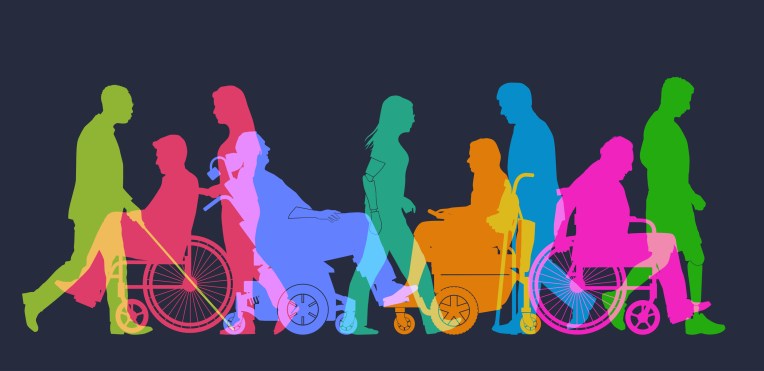The Small Business Innovation Research (SBIR) and Small Business Technology Transfer Research (STTR) program supports the development and commercialization of innovative tools, technologies, and strategies. The National Institute on Alcohol Abuse and Alcoholism (NIAAA) SBIR/STTR program aims to improve the diagnosis, prevention, and treatment—as well as recovery from—alcohol-related problems. The SBIR/STTR program enhances NIAAA’s research portfolio across the spectrum of basic, translational, and clinical research. This portfolio includes research on medications development, alcohol biosensors, screening and diagnostic tools, educational resources, mobile apps, and more.
“Established by Congress as a federal-wide effort, the SBIR/STTR program is an important component of the NIAAA research portfolio, with set-aside funds to advance innovative solutions out of the laboratory into mainstream use,” reflects NIAAA Director George F. Koob, Ph.D.
What Makes the SBIR/STTR Program Unique?
The SBIR/STTR program is also known as America’s Seed Fund. It provides support to early-stage small businesses to meet the nation’s research and development needs in a manner that stimulates innovation, encourages entrepreneurship, and contributes to the national economy. In turn, those research and development efforts increase the likelihood that publicly supported private-sector research gains will be commercialized for the benefit of the American people.
“The SBIR/STTR program provides an incentive for researchers who have innovative ideas and have completed successful R01 grants to try out being an entrepreneur. It de-risks the transition from academia to small business ownership,” adds Megan Ryan, M.B.A., who has served as NIAAA’s SBIR/STTR Program Coordinator since 2016.
Prioritizing project support is essential for early-stage small business viability. Throughout the years, small businesses have leveraged the support provided through the SBIR/STTR program to advance products that show promise but are deemed a lower priority given limited resources.
An example is the development of Vivitrol, a long-acting, injectable form of naltrexone that received U.S. Food and Drug Administration (FDA) approval for alcohol use disorder (AUD) treatment in 2006. Alkermes, at the time a small business biopharmaceutical company specializing in drug delivery technology, was awarded an NIAAA SBIR contract in 2000 to conduct proof-of-concept and efficacy clinical trials of Vivitrol. The SBIR award effectively took the risk out of development and helped Alkermes leverage the award to raise additional financial support and conduct larger clinical trials, ultimately providing the data needed for FDA approval.
Increasing the Visibility of the NIAAA SBIR/STTR Program
In recent years, NIAAA has focused on enhancing its SBIR/STTR portfolio. This effort has largely focused on raising awareness of NIAAA’s SBIR/STTR program and educating entrepreneurs on how to apply for an NIAAA SBIR/STTR award.
To accomplish this, Ms. Ryan teamed up with a marketing company that specializes in science and healthcare to expand NIAAA’s outreach about its SBIR/STTR program. Together, they developed new outreach materials, expanded the NIAAA SBIR/STTR website, and held informational webinars with small business incubators and “state bios.” State bios are organizations that bring together a state’s bioscience companies, universities, research institutions, and others dedicated to advancing life science research and commercialization. These efforts contributed to a 33 percent increase in the total number of SBIR/STTR applications received by NIAAA within a year. Despite research setbacks common in the COVID-19 pandemic, NIAAA has continued to receive an increased number of SBIR/STTR applications.
“These results demonstrate the importance of outreach to potential applicants, which will remain a focus of NIAAA’s SBIR/STTR program moving forward,” says Jenica Patterson, Ph.D., NIAAA’s incoming SBIR/STTR Program Coordinator.
NIAAA SBIR/STTR Program Priority Highlights
One of the program priorities of the NIAAA SBIR/STTR program is developing wearable biosensors to detect the amount of alcohol an individual has consumed. Researchers are using innovative techniques to improve the accuracy of the devices as well as their wearability. This work will allow researchers to better measure alcohol consumption in clinical research studies and treatment settings.
Another priority is the development of new medications to treat alcohol-related consequences and conditions, such as AUD, alcohol-associated organ damage (AAOD), alcohol withdrawal, and alcohol overdose. An example of an NIAAA-supported SBIR project, led by Felix Moser, Ph.D., at Synlife Bio, is the development of a novel therapeutic injection to counteract alcohol overdose. Billions of dollars are spent annually to treat alcohol overdose cases, many of which result in death—yet there are no FDA-approved pharmacological treatments. NIAAA’s commitment to developing new medications is emphasized by a recent SBIR/STTR funding announcement, and is an important step in bridging the gap between basic research and clinical trials.
Improving diagnostics for AAOD is another area of interest for NIAAA’s SBIR/STTR program. For example, InLighta BioSciences, a company started by Jenny Yang, Ph.D., has developed a novel contrast agent for magnetic resonance imaging (MRI) that significantly improves diagnostic ability for conditions such as liver disease. Unlike traditional contrast agents, this agent is non-toxic and can detect early stages of disease. From the beginning, this technology was poised to provide a non-invasive early diagnostic tool for liver disease—a disease in which alcohol misuse is a major risk factor. In the United States, nearly half of liver disease deaths are associated with alcohol misuse.
NIAAA’s SBIR/STTR program also supports the development of alcohol prevention programs, educational services, behavioral treatment programs, and digital health technologies. In one ongoing NIAAA-supported clinical trial, DynamiCare Health is testing a smartphone-based digital coaching program to support accessible and affordable long-term recovery from AUD. The program is based on behavioral techniques such as contingency management, recovery coaching, and cognitive behavioral therapy.
Learn More
For more information about the NIAAA SBIR/STTR program, visit the NIAAA SBIR/STTR website.
References:
NIAAA SBIR/STTR Program. Available at https://www.niaaa.nih.gov/research/niaaa-sbir. Accessed March 16, 2022.
NIH. A liposomal enzyme system for removal of ethanol from the blood. Available at https://reporter.nih.gov/search/0u4ykZHaOkmWs3KG7egLHQ/project-details/10139179. Accessed March 16, 2022.
NIH. Investigational New Drug (IND)-enabling and Early-Stage Development of Medications to Treat Alcohol Use disorder and Alcohol-Associated Organ Damage (U43/U44 Clinical Trial Optional). Available at https://grants.nih.gov/grants/guide/pa-files/PAR-22-102.html. Accessed March 16, 2022.
Salarian, M; Xue, S.; Ibhagui, O.Y.; and Yang, J.J. Designing calcium-binding proteins for molecular MR imaging. Methods in Molecular Biology. 2019;1929:111–125. PMID: 30710270
NIH. Detecting and staging of liver fibrosis by precise MRI (pMRI). Available at https://reporter.nih.gov/search/-YBPOqtaA02LYdGGS9qccw/project-details/9971410. Accessed May 2, 2022.
National Library of Medicine. Tech-Enabled CM for AUD at Scale in Medicaid. Available at https://clinicaltrials.gov/ct2/show/NCT04581499. Accessed March 16, 2022.
This article first appeared in NIAAA Spectrum.
To receive email alerts from NIAAA, sign up at https://public.govdelivery.com/accounts/USNIAAA/subscriber/new.
Related
























































.jpg)


